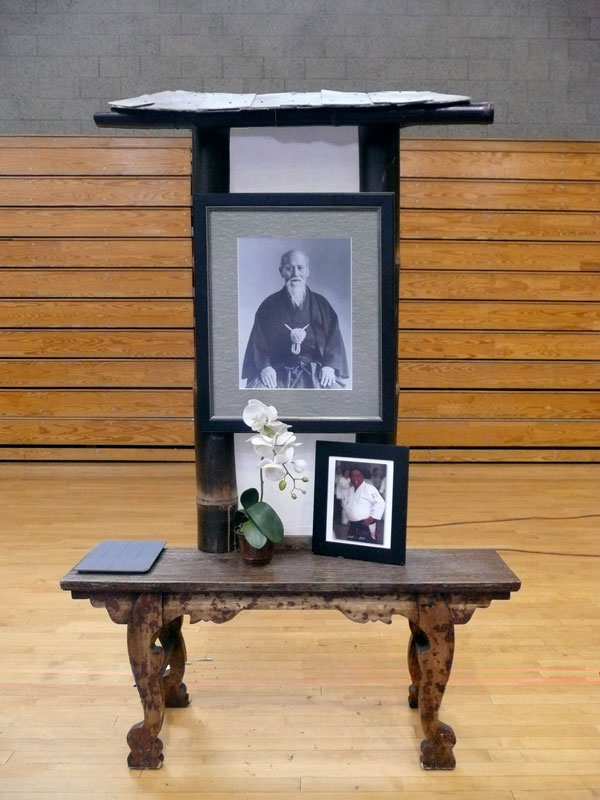DOJO ETIQUETTE

Proper observance of etiquette is as much a part of your training as is learning techniques. Please take the following guidelines seriously.
When entering or leaving the dojo, it is proper to bow in the diretion of Sensei's picture, the kamiza, or the fot of the sojo. You should also bow when entering or leving the mat.
No shoes on the mat.
Be on time for class. If you do happen to arrive late, sit quietly in seiza on the edge of the mat until the instructor grants permission to join practice.
If you should have to leave the mat or dojo for any reason during class, approach the instructor and ask permission.
Avoid sitting on the mat with your back to the picture of O Sensei or the kamiza. Also, so not lean against the walls or sit with your legs stretched out. (Either sit in seiza or cross-legged.)
Remove watches, rings, and other jewelry before practice.
Do not bring food, gum, or beverages with you onto the mat.
Please keep your finger and toe nails cut short.
Please keep talking during class to a minimum. What conversation there is should be restricted to one topic -- Aikido.
Carry out the directives of the instructor PROMPTLY. Do not keep the rest of the class waiting for you!
do not engage on rough housing or needless contests of strength duting class.
Keep your training uniform clean, in good shape, and free of offensive odors.
Please pay your membership dues promptly. If, for any reason, you are unable to pay your dues on time, talk with the person in charge of dues collection. Sometimes special rates are available for those experiencing financial hardship.
Do not change your clothes on the mat.
Remember that you are here to learn, and not to gratify your ego. An attitude of receptivity and humility is therefore advised.
Preserve common-sense standards of decency and respect at all times. The practice of Aikido ultimately must become the practice of our daily lives, moment to moment. Every moment of life involves some sort of conflict - with others, with our environments, width our bodies, with ourselves. And yet, it is our choice to see this conflict as something to be avoided and struggled with, or as the creative force of change, which makes true growth and learning possible.